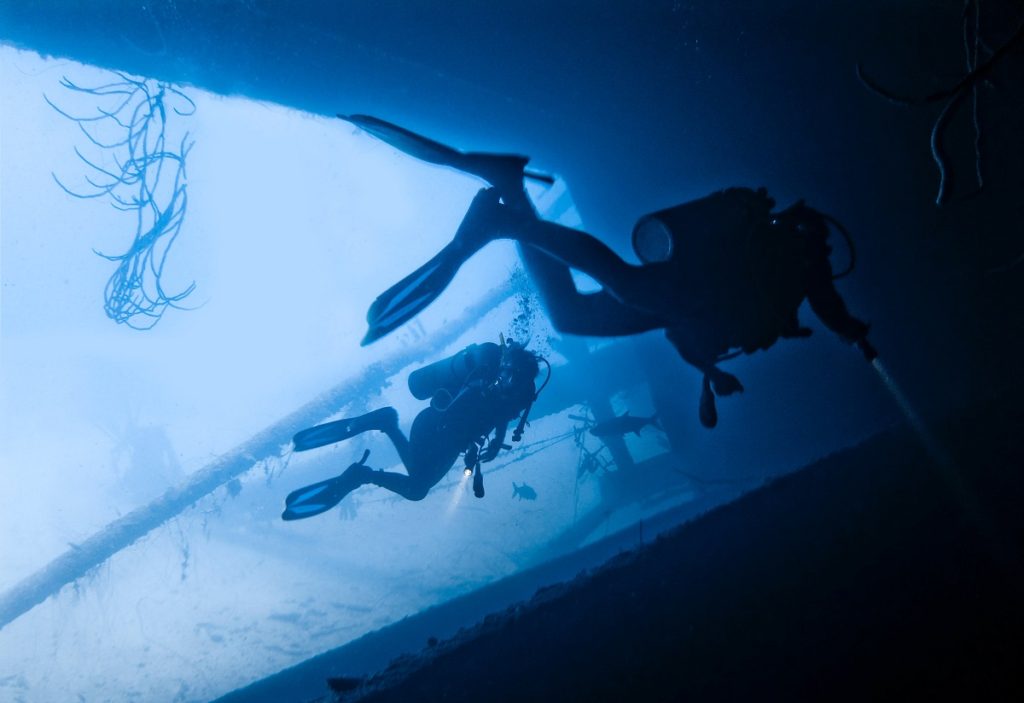The history of the human desire to explore the depths of the sea knows four main “methods” of diving, among which scuba diving appeared last.
The first was breath-hold diving, also known as free diving and skin diving. These forms of diving are still used for both sports and commercial purposes (such divers include divers from Japan and Korea or, for example, pearl divers in the Tuamotu archipelago). Find all the types of scuba diving below!
Open water diving
Open water scuba diving is carried out for entertainment and pleasure, the ultimate goal of such dives is to get acquainted with the underwater world and study the flora and fauna of the seas and oceans. The feeling of weightlessness, the illusion of soaring over the abyss brings great pleasure to the diver while open water diving.
Deep diving
During deep sea diving, the air cavities of the diver are compressed by increasing water pressure throughout the dive. Each such immersion is limited by several factors, the most important of which are respiratory arrest and lack of oxygen. This is usually a minute or less.
Drift diving
Drift scuba diving is the quickest and most efficient type of diving. The boat follows you and is ready to pick you up any time you need it.
Wall dive
The underwater wall covered with corals and other forms of marine life is a whole bio-system that changes and attracts different inhabitants of the sea, depending on the depth. With the right organization of the dive and good weather conditions, the risk during wall diving is minimal.
Night diving
The very opportunity to see in the dark gives the diver a rare pleasure. At this time, you can see strange animals and fish that lead a nocturnal lifestyle. At night dives divers already need additional equipment – lamps, light ballpoint pens, stroboscopes. Among the main features of night scuba diving should be noted detailed knowledge of the technique of night dives, good knowledge of the dive site, and experience of underwater photography in unusual conditions.
Wreck diving
Such dives are carried out primarily for research purposes, to reveal the secrets of shipwrecks and the lifting of sunken objects, and only sometimes as entertainment. The risk and safety of each dive depend on the interaction of partners, proper planning, and conduct of the wreck diving.
Ice diving
Ice diving is used for entertainment and scientific purposes. Such dives allow scientists to observe and study the intricate forms of ice, animals, and vegetation of the cold environment. In addition to the traditional set of equipment, divers need non-freezing regulators, safety ropes, intercoms, and even a spare dry suit. Among the features of ice diving, the most notable are long and hard training, good knowledge of safety, well-established interaction of partners, the correct organization of the dive site, knowledge of special procedures for diving. Ice diving is a high-risk sport, the safety of the diver here depends on the correct planning and accuracy of the dive.
Cave diving
Like ice diving, cave diving requires special equipment and skills, including the ability to use a reel with a rope. In addition to the fact that training in this area of diving is quite complex and time-consuming, we must remember that cave dives take place in a confined space. In such difficult conditions impeccably worked out skills of actions in emergencies, the strength of will and ability to cope with panic, good ability to be guided are necessary. The risk of such a dive is huge, but the satisfaction obtained in this case, the maximum.
Technical Diving
The main purpose of such dives is to study the natural world of great depths, caves, sunken ships, and cities. Dives to great depths, despite all their technical complexity (or rather, thanks to them), allow the diver to better understand the underwater world. Divers use lights, intercoms, safety ropes, etc. In addition to the mandatory use of numerous special equipment, the danger of technical diving is indicated by the complexity of preliminary training.
Rescue Diving
Rescue diving is carried out to help divers who come across any kind of difficulties while diving in the depth.

cZAHQMfW
zaVxYTUp
OdmbuwDVjUoGlft